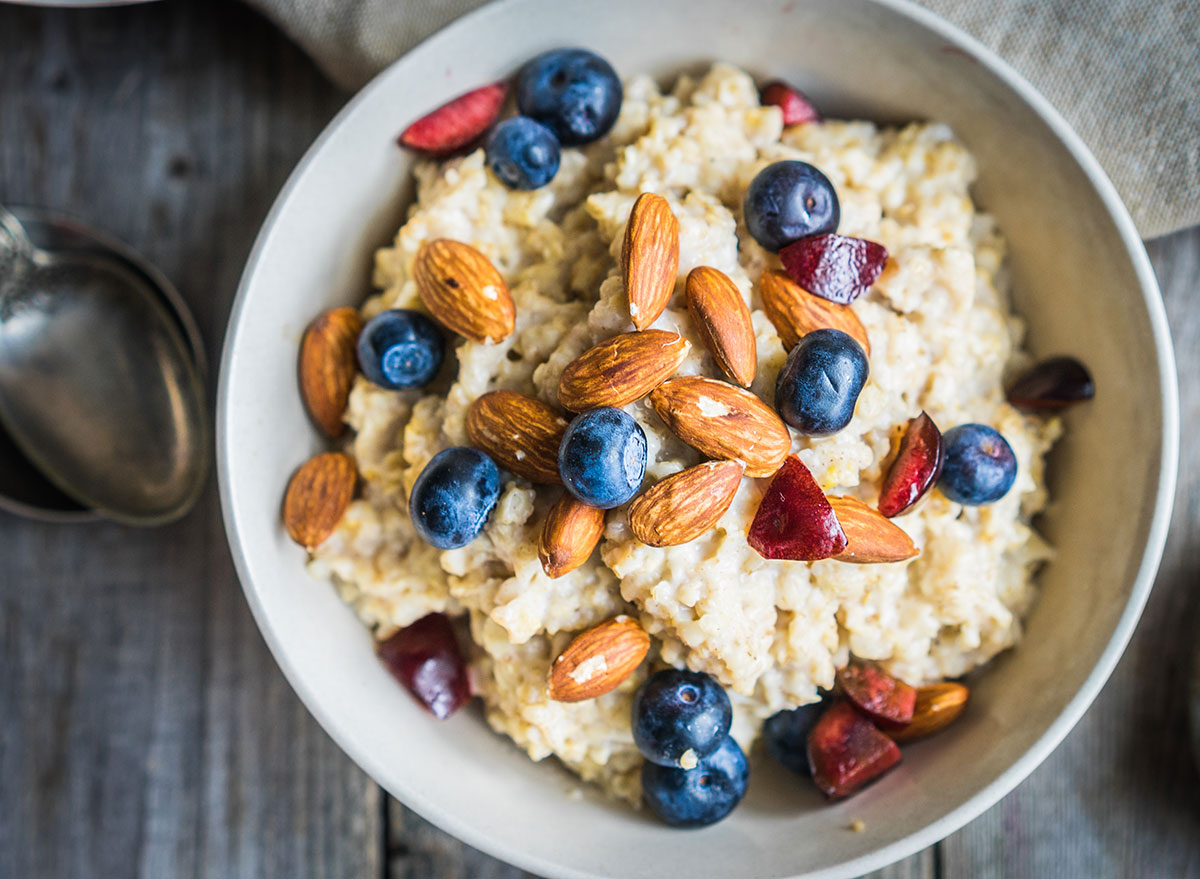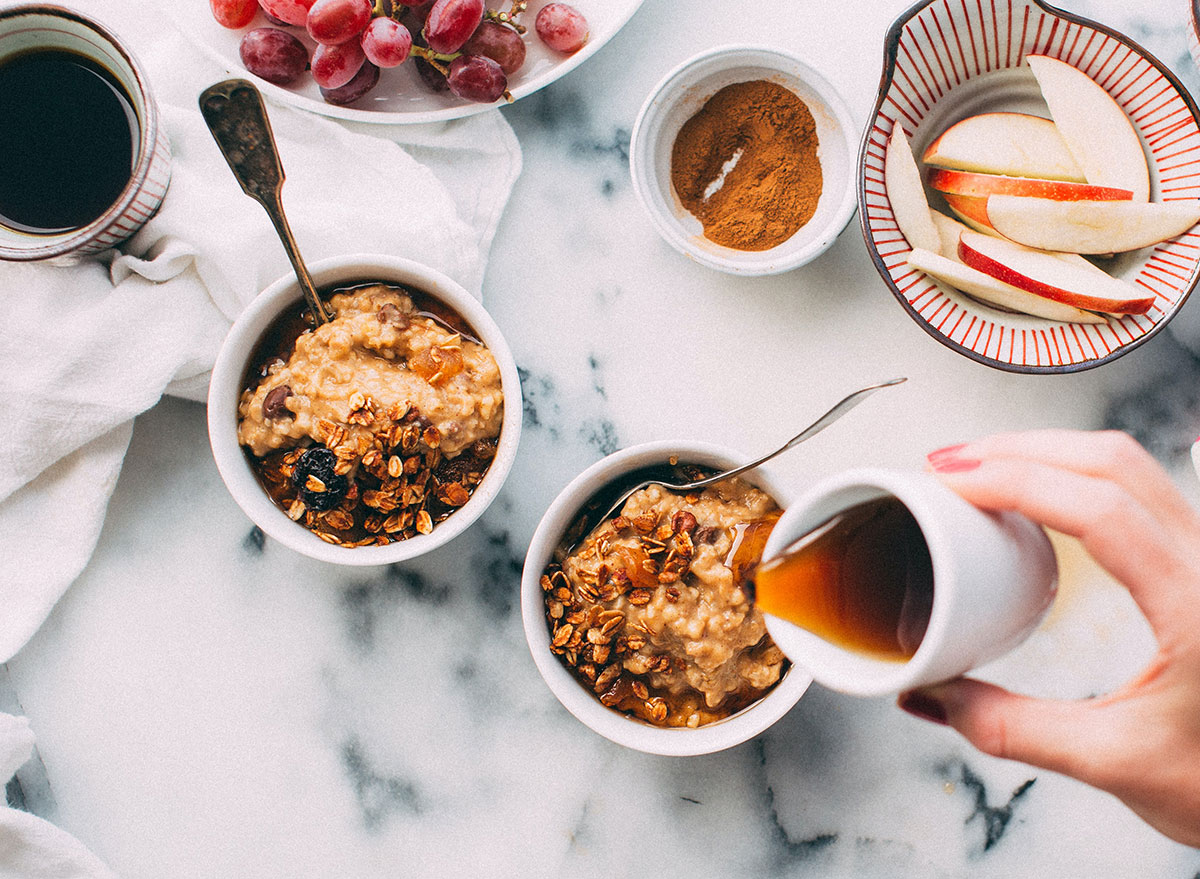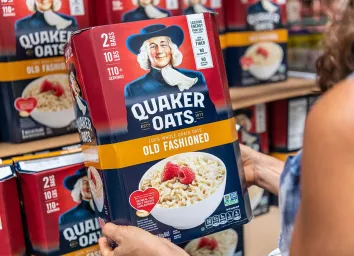Never Make This One Mistake When Cooking Oatmeal
Steel-cut oatmeal is a game-changer. Not only are steel-cut oats majorly satiating, but they're also very versatile and nutritious. Sure, they may take a few extra minutes to prepare than it would take you to make a microwaveable oatmeal packet, but trust us—it's worth it.
However, if you've ever made steel-cut oatmeal on your stovetop before, you may have noticed one sticky outcome that occurs when you put the heat on a little too high. We're talking about that translucent film that appears on the top layer of your oatmeal. You may also notice, for lack of better words, sticky goop emerging as well. Just know, you're not alone—this is a very common occurrence.
"I'm never sure what to do with it. It sometimes becomes crusty and crackling and I end up getting grossed out by its appearance and chucking it into the compost bin," writes Reddit user, polkaron. "One time I decided to nab a bit out of it and it was sort of sweet. I'm mostly bothered by it for disturbing the texture of my oatmeal. Is this coming from me cooking it wrong somehow? Most photos of oatmeal I see never seem to have this stuff so I'm wondering if anyone else is removing it or is it coming me cooking it wrong."

She continues and says that she has used steel-cut varieties from both McCann's and Bob's Red Mill, adding that she "tends" to follow the instructions on the package and only ever adds brown sugar and salt to the oats and water.
Two users responded back to her inquiry saying that it's likely the effect of the soluble fiber in the oats that's causing the film or goop to appear on the surface layer. Soluble fiber dissolves in the water but perhaps leaving the oats on the stove for too long or on a too-high heat setting could be hindering that process.
"That's just the soluble fiber in the oats. You can try cooking the oats a little less or not letting them sit for long if you don't like the texture," writes iamthekingoftheworlb.
While we're not entirely sure soluble fiber is the cause for this goopy substance or the thin film, we do know one thing is for certain—it won't hurt you to consume. Next time you go to make steel-cut oats, try lowering the heat by a smidge and avoid letting them sit for too long on the stove.
For more tips, be sure to check out Popular Foods With More Fiber Than Oatmeal, and then, don't forget to sign up for our newsletter!









